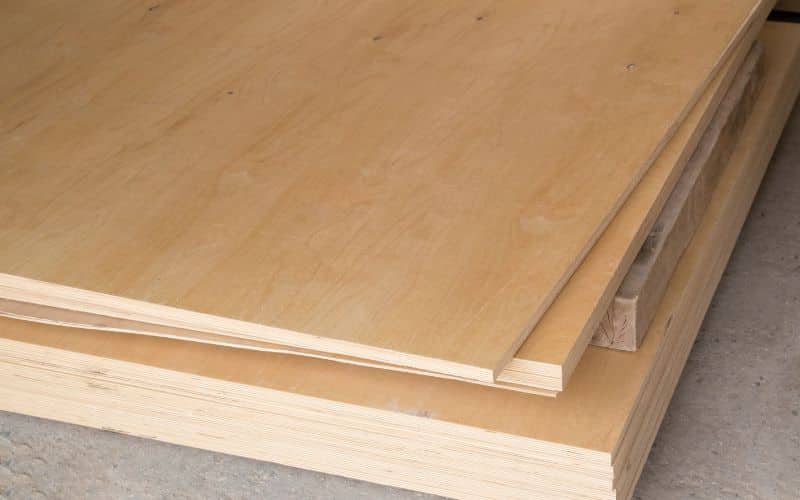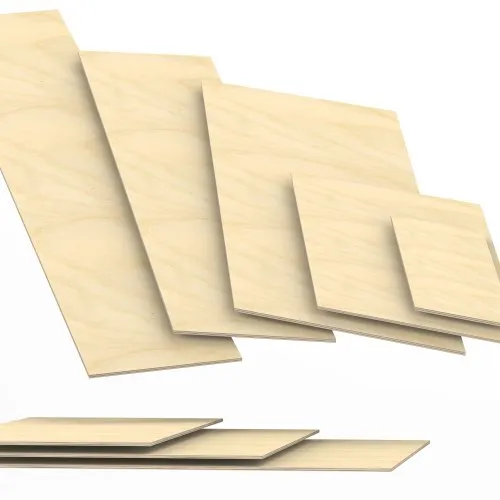When it comes to woodworking projects, plywood is a versatile and popular material. But have you ever wondered how long plywood can actually last? In this article, we’ll explore the lifespan of plywood and give you some insights into its durability, maintenance, and factors that can impact its longevity. So, if you’re curious about how long plywood can stand the test of time, keep reading!
Plywood, like any other material, has its own unique characteristics that determine its lifespan. How long plywood lasts depends on various factors such as the quality of the wood used, the type of adhesive used to bond the layers, and the conditions it is exposed to over time. From furniture to construction projects, understanding the durability of plywood is crucial for making informed decisions.
To determine the longevity of plywood, we need to consider factors such as moisture, sunlight, and proper maintenance. Moisture can gradually cause plywood to swell, warp, or even rot, shortening its overall lifespan. Sunlight exposure can also lead to discoloration and weakening of the wood fibers. However, by taking proper care, protecting it from extreme weather conditions, and using suitable finishes, you can prolong the lifespan of your plywood projects.
So, if you’re planning a project that involves plywood, understanding how long it can last is essential. By considering the quality, maintenance, and environmental conditions, you’ll be better equipped to make informed decisions and create long-lasting, durable creations. Join us as we delve into the world of plywood durability and learn how to make your woodworking projects stand the test of time!

How Long Does Plywood Last? Understanding the Lifespan of Plywood
Plywood is a versatile and widely used material in construction and woodworking projects. But just how long can you expect plywood to last? In this article, we will delve into the factors that affect the lifespan of plywood and provide you with valuable information to help you make informed decisions when using this material.
1. Quality of Plywood
The quality of plywood plays a crucial role in determining its lifespan. Plywood is available in various grades and types, with each having specific strengths and weaknesses. High-quality plywood, such as marine plywood, is manufactured to withstand harsh environmental conditions, making it highly durable and long-lasting. On the other hand, low-quality plywood may have knots, voids, or weak layers, which can significantly affect its durability. It is essential to choose the right grade of plywood for your project to ensure optimal lifespan.
Additionally, the type of glue used in plywood construction also impacts its longevity. Exterior-grade plywood, which is typically used for outdoor applications, is made with water-resistant adhesives that can withstand moisture and prevent delamination. Interior-grade plywood, while suitable for indoor use, may not be as resilient to moisture and weathering.
2. Environmental Factors
Environmental factors play a significant role in determining how long plywood lasts. Exposure to moisture is one of the primary culprits that can cause plywood to deteriorate. When exposed to prolonged moisture, plywood can warp, swell, or even rot, significantly reducing its lifespan. In areas with high humidity or where the plywood comes into direct contact with water, such as in bathrooms or outdoor decking, it is crucial to choose moisture-resistant plywood and apply protective coatings.
Aside from moisture, extreme temperatures can also impact the lifespan of plywood. Frequent exposure to heat and sunlight can cause the wood fibers to break down, leading to discoloration, warping, and weakening of the plywood. Protecting plywood from direct sunlight and extreme temperature fluctuations can help prolong its lifespan.
3. Maintenance and Treatment
Proper maintenance and treatment can significantly extend the lifespan of plywood. Applying a suitable finish, such as paint or varnish, can provide a protective barrier against moisture, UV rays, and other environmental factors. Regular inspections and prompt repairs are essential to address any signs of damage or wear and tear, preventing further deterioration of the plywood. Depending on the application, periodic reapplication of protective coatings may also be necessary to ensure the longevity of the plywood.
Furthermore, adequately storing plywood when not in use can help prevent unnecessary damage. Keeping it in a dry and well-ventilated area, away from direct sunlight, and elevating it off the ground can minimize the risk of moisture absorption, warping, and insect infestation.
Factors That Affect the Lifespan of Plywood
1. Type of Plywood
Plywood is available in different types, such as marine plywood, exterior-grade plywood, and interior-grade plywood. Marine plywood, being the most durable and moisture-resistant, can last for decades when properly maintained. Exterior-grade plywood is suitable for outdoor uses and can withstand exposure to the elements relatively well. However, it may not have the same level of moisture resistance as marine plywood. Interior-grade plywood, while less resilient to moisture, can still last for several years when used indoors and properly protected.
2. Level of Exposure
The level of exposure to environmental elements significantly affects the lifespan of plywood. Plywood used in outdoor applications, such as siding, decking, or roofing, is subjected to harsher conditions, including moisture, sunlight, temperature fluctuations, and pests. This exposure can accelerate the deterioration process and reduce the lifespan of plywood compared to plywood used solely for indoor applications.
3. Maintenance and Care
Regular maintenance and proper care are essential to ensure the longevity of plywood. This includes applying protective finishes, inspecting for any signs of damage or wear, and promptly addressing any issues that arise. Neglecting maintenance can lead to quicker deterioration and a shorter lifespan for plywood.
Prolonging the Lifespan of Plywood
1. Choose the Right Plywood
Selecting the appropriate grade and type of plywood for your specific application is crucial. Consider factors such as moisture resistance, exposure to the elements, and overall durability when choosing plywood for your project.
2. Apply Protective Coatings
Protective coatings, such as paint, varnish, or sealants, act as a barrier against moisture, UV rays, and other environmental factors. Regularly inspect the coatings and reapply as needed to ensure ongoing protection.
3. Maintain and Repair
Regularly inspect plywood for any signs of damage or wear, and promptly address these issues to prevent further deterioration. This may involve filling cracks, sanding rough surfaces, and applying appropriate repairs or reinforcements.
In conclusion, the lifespan of plywood depends on various factors, including its quality, exposure to environmental elements, and proper maintenance. By choosing high-quality plywood, protecting it from moisture and extreme temperatures, and ensuring regular maintenance and care, you can maximize the lifespan of plywood and make the most out of this versatile material.
Key Takeaways
- Plywood can last for a long time if properly maintained and protected from moisture and pests.
- Coating plywood with paint or sealants can increase its durability and lifespan.
- Plywood used in outdoor applications may require more frequent maintenance and replacement due to exposure to weather conditions.
Frequently Asked Questions
Introduction:
Plywood is a commonly used building material known for its strength and versatility. If you’re considering using plywood for a project, one question you might have is how long it will last. Here are some frequently asked questions about the lifespan of plywood:
1. How can I make plywood last longer?
Plywood can have a longer lifespan if it is properly maintained and protected. One way to make plywood last longer is by applying a protective finish, such as paint or varnish. This can help shield the wood from moisture, preventing it from warping or rotting. Additionally, keeping plywood away from direct sunlight and extreme temperatures can also help extend its lifespan. Regularly inspecting and repairing any damage, such as cracks or loose edges, can prevent further deterioration and prolong the life of the plywood.
2. Does the type of plywood affect its lifespan?
Yes, the type of plywood can impact how long it lasts. Different types of plywood have varying levels of durability and resistance to moisture and rot. For example, marine-grade plywood is specifically designed to withstand exposure to water and has a longer lifespan than standard plywood. Another factor to consider is the glue used in the construction of the plywood. Exterior-grade plywood, which uses water-resistant glue, is more suitable for outdoor applications and can last longer than interior-grade plywood.
3. Can plywood be used outdoors?
Yes, plywood can be used outdoors, but the type of plywood and proper precautions need to be taken. Exterior-grade plywood, which is designed to withstand moisture and weather conditions, is recommended for outdoor projects. It is important to protect the plywood from direct exposure to rain, snow, and excessive moisture by applying a protective finish and ensuring proper drainage. Regular maintenance and inspections are also necessary to prevent any damage or early deterioration.
4. How long does plywood last in different environments?
The lifespan of plywood can vary depending on the environment it is exposed to. In dry and well-ventilated indoor environments, plywood can last for decades. However, in outdoor environments where it is exposed to moisture, extreme temperatures, and sunlight, the lifespan can be shorter. Proper maintenance, protection, and choosing the appropriate type of plywood for the specific environment can significantly extend its lifespan.
5. Can plywood be recycled?
Yes, plywood can be recycled. When plywood is no longer usable or needed, it can be recycled into other wood products or used as a source of biomass energy. Recycling plywood helps reduce waste and the need for new materials. It’s important to check with local recycling facilities or waste management programs to ensure proper disposal or recycling options for plywood in your area.

HOW LONG DOES PLYWOOD FLOORING LAST?
Summary
Here’s what you need to know! Plywood can last a really long time if it’s well taken care of. It’s important to protect plywood from moisture and keep it clean to make it last even longer. Regular maintenance and sealing can help extend its lifespan. While there are different types of plywood, they can generally last for many years if they’re properly maintained. Remember, taking good care of your plywood will help it last a long, long time!
